Extreme Analogs: From the Seafloor to Deep Space
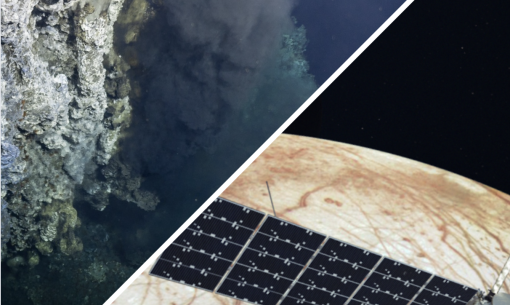
This blog was written by Brandon Rodriguez of NASA’s Jet Propulsion Laboratory and Science Communication Fellow on Expedition NA161.
By now you’ve likely heard of the captivating geology and biology presented at the ocean floor located uniquely where we find hydrothermal vents- fissures where Earth’s warm mantle heats up water and sends dissolved minerals up in thick back clouds as jets of smoke. The dissolved chemicals, such as sulfides, provide food to special kinds of organisms that crowd these vents. But while these hydrothermal vents are themselves a rich scientific destination, did you know that scientists also study these features as analogs, or ‘representative models’, for how to look for life on other worlds?
Since the 1977 discovery of hydrothermal vents by Dr. Ballard’s team, space scientists have re-envisioned what makes a celestial body ‘habitable’, or capable of harboring life. For decades, scientists described a planet or moon as habitable primarily based on its location relative to its sun. The idea being that life on Earth relies on water, and only at certain distances from our hot sun could water exist in all three phases: gas, liquid, and solid. If we were too close, all the water would boil; if too far, our planet would be too cold and all water would freeze. This distance from the zone was called ‘habitable zone’, or more commonly, the ‘Goldilocks zone’.
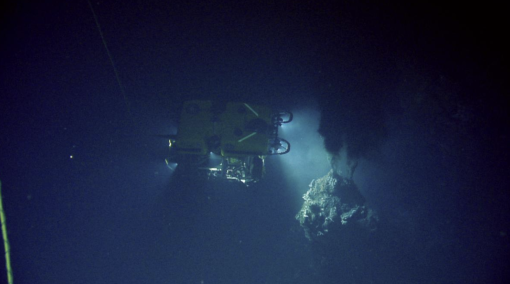
While scientists still believe water is necessary for life, recent discoveries have challenged where it can exist in its three phases. Enter Jupiter’s moon, Europa. It has been known since the 1970’s that Europa is completely covered by ice, but it wasn’t until NASA’s Galileo mission in 1995 that scientists received the first evidence that this moon may be hiding a giant liquid water ocean beneath its icy shell.
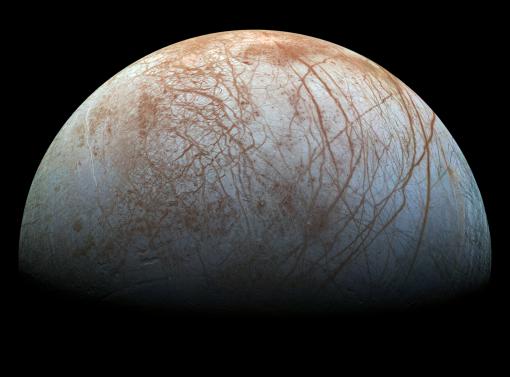
This moon, well outside of the aforementioned habitable zone, is only slightly smaller than our own, yet houses more water than on all of Earth combined. To date, scientists have used density and magnetic measurements to propose that the shell of Europa is somewhere between 3-30 km, and that the water below is salty, much like our own. The ocean may be on the order of 100 km deep, as compared to the average 4 km depth here on Earth.

How then does Europa maintain a liquid ocean so far away from the heat of the sun? Scientists believe that this is caused by the gravitational pull from neighboring Jupiter on the metallic core below the water. The tensional pull causes friction, generating heat at the ocean floor, causing the water to stay relatively warm. Naturally this discovery thrilled geologists: a hot core sending heat energy to the ocean floor is exactly how we observe hydrothermal vents here on Earth!
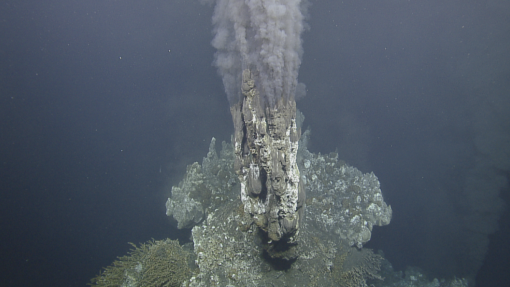
As we’ve seen, hydrothermal vents are home to some of the wildest organisms on Earth, capable of surviving in the most inhospitable conditions on the planet, and challenging how we view the criteria for where to look for life. Our ocean hosts an estimated 50-80% of all life on Earth, with over 200,000 species discovered. The exotic biomes of hydrothermal vents teach us that life can find a way even in the absence of light, so long as enough heat, chemical energy, and time allow for life to draw from the geological environment.
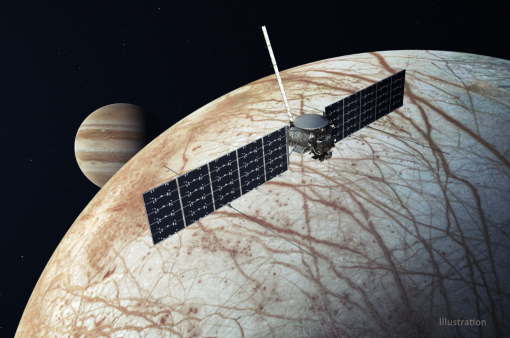
With the 2024 launch of NASA’s Europa Clipper spacecraft, scientists will begin the years-long wait to receive detailed data about Europa and what lies beneath. The mission will provide a map of the thickness of the outer ice shell of the moon, as well as provide detail as to the composition of the ocean chemistry. But most of all, it will help unravel the mystery of what takes place at Europa’s alien ocean depths, continuing to shape astrobiology and the search for extraterrestrial life.

For classroom and at-home activities about how scientists learned about Europa’s ocean, be sure to check out the following lessons from Nautilus Live and the NASA Jet Propulsion Laboratory:
- Living on a Chimney
- Discovering Alien Oceans: Magnetism
- Discovering Alien Oceans: Density
- Frozen Formula: A Pi in the Sky Math Challenge
And watch more on hydrothermal vents here, with our collection of footage from dives over the years.

Stay tuned as we continue to explore the extreme habitats of the NEPTUNE Observatory with Ocean Networks Canada during the NA161 expedition!

#ONCAbyss Summer 2024
This expedition brings E/V Nautilus to the Northeastern Pacific Ocean for the eighth year of the partnership between Ocean Networks Canada and OET.





